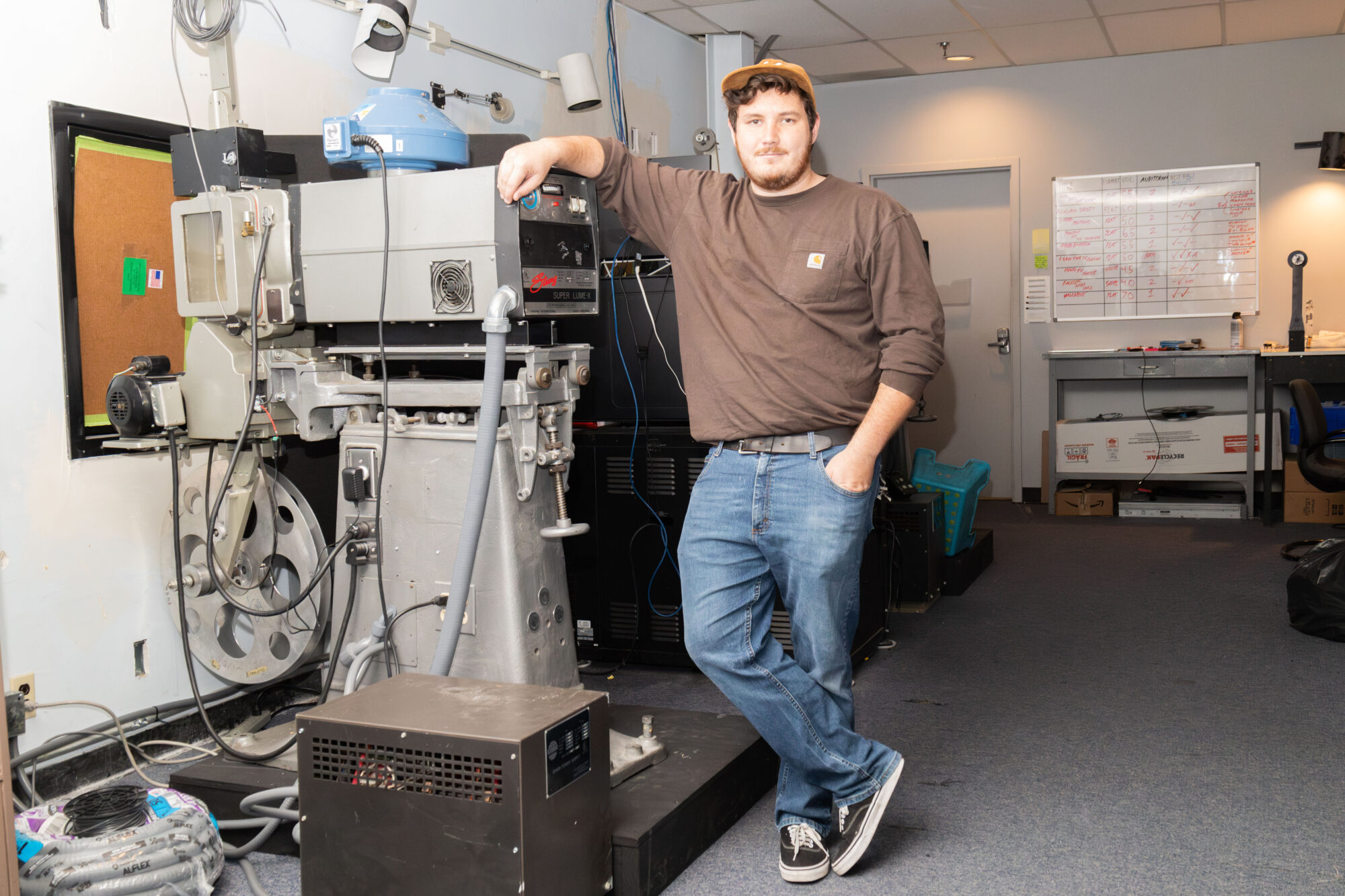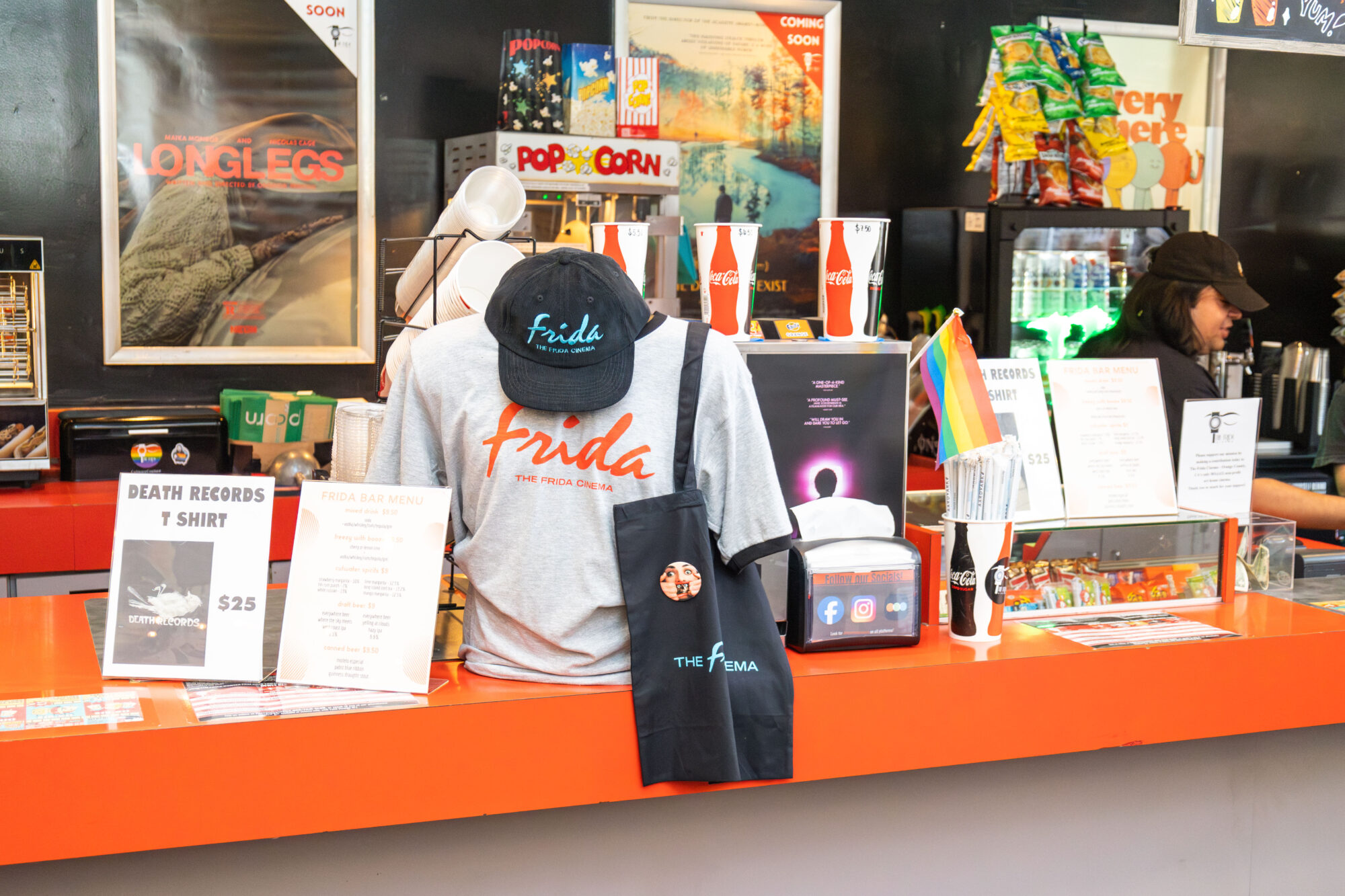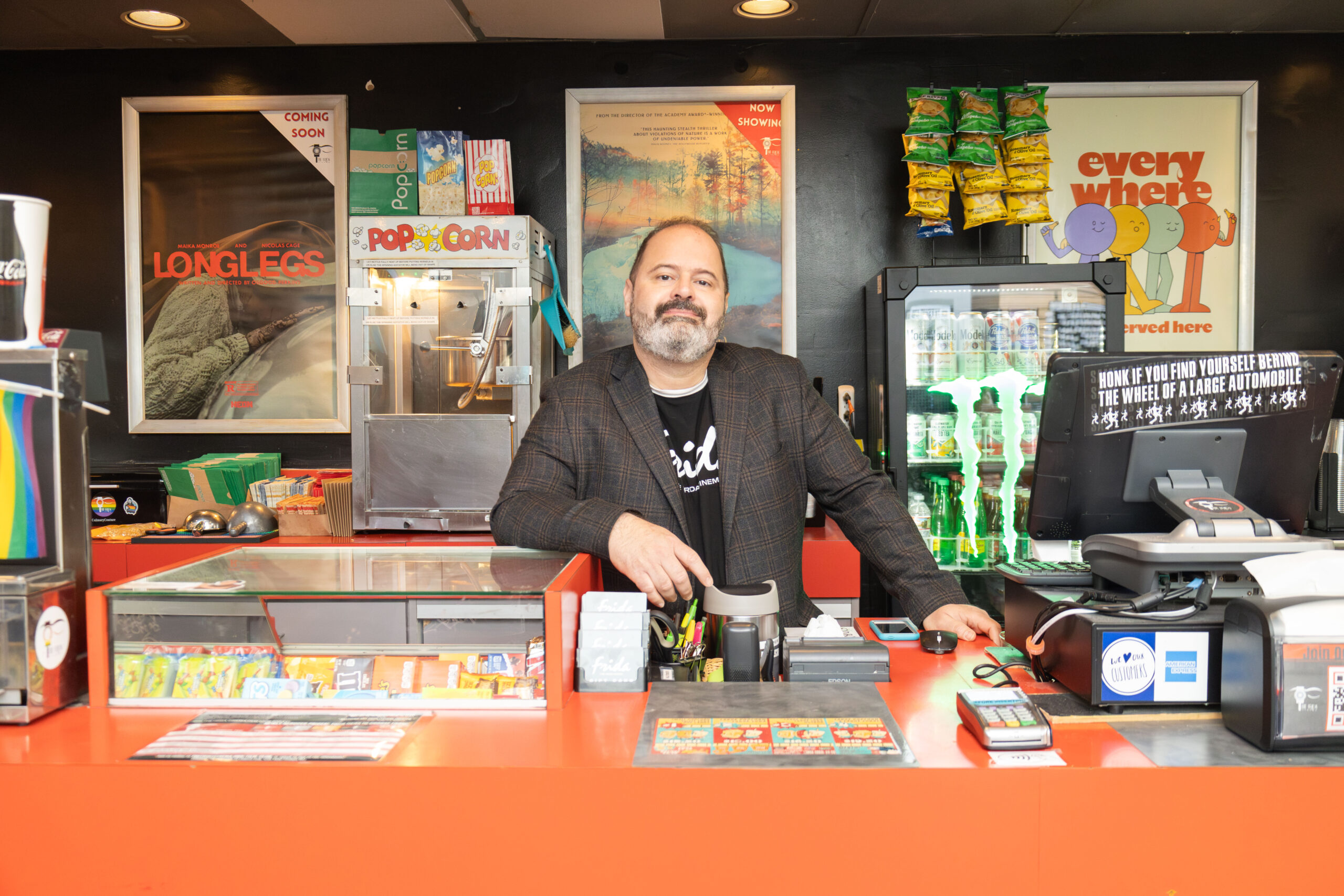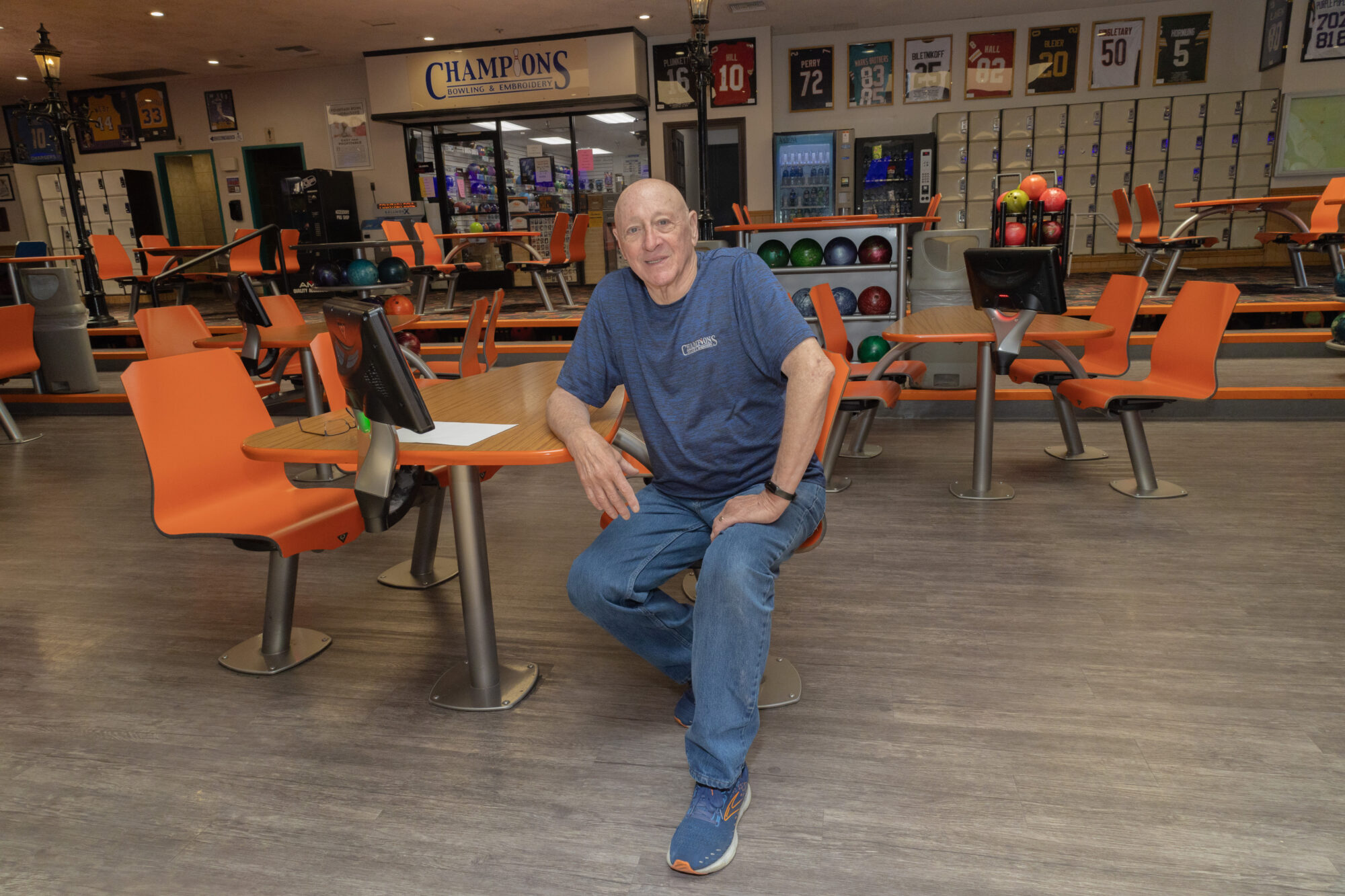On Fourth Street, an audience dressed in oversized suits packed into a small moviehouse to watch a re-released showing of Stop Making Sense, the classic 1984 Talking Heads concert film. Before the film began, a Talking Heads cover band played to scattered applause. However, once the film began, the seemingly calm audience transformed into party animals: they hopped out of their seats, started dancing in the aisles, and created conga lines, even crowding near the screen.
The scene, which would have been unusual at any other theater, is typical at The Frida, a non-profit arthouse cinema celebrating its 10th anniversary this year. Dedicated to showing vintage, indie, absurd, and other alternative film genres, the theater’s specialty is hosting exclusive events, such as viewings of the Rocky Horror Picture Show, which sells out almost every screening. The cinema also hosts Q&A sessions with crew and cast members, themed parties, and marathons of cult franchises. It has long been a place for artists, oddballs, and hipsters to connect with and bond over their love of film.
Bobby Thornson, one of the three managers at Frida, has experienced plenty of exclusive events. “In only the span of two years, there have already been so many things that I’ve been blown away by,” said Thornson. “I think one of my favorites is that we had Ana Lily Amirpour.”

Amirpour, an Iranian-American filmmaker known for her films A Girl Walks Home Alone at Night and The Bad Batch appeared at the Frida in August 2022 for a viewing of her then-new film, Mona Lisa and The Blood Moon. “I remember watching her movies as an undergraduate and discovering her on my own. Then having her come to the theater that I worked at was a huge thing,” said Thornson.
Over the last decade, the Frida Cinema has established itself as the top indie movie house in Orange County. The theater’s owner, Logan Crow, has also used the influence of his non-profit to elevate Santa Ana’s art scene through various fundraisers and community events, including organizing the Downtown Santa Ana Artwalk.
Crow, who started posting on Twitter about alternative film showings throughout the Los Angeles area in the early 2000s, soon began programming shows at the Vista Theatre after asking the movie house to host. After starting a few community-led film showings in Long Beach, Crow searched for a permanent space to call his own.
This led to the formation of a major influence in Santa Ana’s art world, The Frida Cinema. On Feb. 21, 2014, the theater opened its doors.
With a permanent space, Crow was free not only to host the local community but to invest in it, especially by providing a platform for younger filmmakers to showcase their work.
“I wrote a scene that took place at a movie theater, and they let me shoot inside,” said Sammy Trujillo, a local filmmaker. “I came to the theater a few times to see movies, but that was the first time I actually got behind the scenes and met Logan.”
Soon after filming his project, Trujillo asked Crow if he could take his college internship at The Frida Cinema and hasn’t left since. He’s been working there since 2015.
Along with allowing students to film school assignments and passion projects, the theater also hosts student-made film festivals. Trujillo is one of many film students who spend their time volunteering for the Frida’s cause.
“It’s the last of its kind,” Trujillo states, “We have programming that is meant to introduce people to the world of film. Even if you like to see movies, we all have our own little bubbles, and the Frida really pushes you to see stuff outside your range.”
While programming in Long Beach, Crow learned to merge art mediums with community fundraising. This tactic is applied to a wide range of causes such as OC Pride, AAPI Hate Initiative, Women’s Journey Foundation, and many more. Usually, a foundation will collaborate with the cinema to host a showing, in which part of the proceeds go towards the foundation’s cause.
This year The Frida Cinema expanded its involvement in the city by becoming the main patron for the Downtown Santa Ana art walk.
A monthly event featuring live music, performances, and galleries from local artists, the art walk is an essential part of Santa Ana’s community, bringing together local vendors, businesses, artists and families.

When the city council dissolved the organization responsible for the art walk, Crowe reached out to the city of Santa Ana, and the city gave him the program. The Frida sourced new fundraising and began working immediately, allowing the DTSA art walk to resume just two weeks later. The event continues to take place on the first Saturday of each month.
“I am not here to reinvent any wheels… for the art walk, my goal was to keep it exactly what it is, and just find ways to expand it. I don’t have to change anything,” Crow explains. “We’ve had 15 months of art walks down and there’s no outdoor film components. I want to maintain this thing that has been embraced and find new ways to add to the event.”
Crow’s projects require extensive planning and organization. By operating an arthouse that runs seven days a week, the workload seems overwhelming. The cinema is led by seven other staff members and a crew of volunteers working at the front of the house.
“The last ten years have been a blur. I don’t get to feel in the moment,” Crow shares.
As for the theater, Crow intends to keep The Frida running for as long as he can. He shares that operating the venue and organizing the community art shows are intensive, but he understands the importance of the theater as a creative hub and gathering place in the community.
Without Crow’s willingness and dedication to his craft, Fourth Street would be missing its watering hole for multimedia art.
“I feel like no matter what is going on, the Frida has always opted for whatever gages the community, whatever allows people who might not normally come out to the theater to come out,” claims assistant manager Thornson. “I think the Frida is the epitome of what it means to be a non-profit as a crucial facet of its community.”
- 5 Fabulously themed bars in OC - December 3, 2024
- Moving OC Pride out of DTSA is a terrible mistake - September 23, 2024
- Emigdio Vasquez painting now lives in Cesar Chavez building - August 22, 2024











